Nearly three years ago, I stopped by one of the highest volume Chevy dealership for plug-in vehicle sales in Southern California: Rydell Chevrolet in Northridge. I walked straight past the long line up of recently refreshed 2016 Chevy Volts, which could now go an amazing 53 miles on a battery charge before the gasoline range extender kicked on. But I had already gone down the path of PHEVs (plug-in hybrid electric vehicles); my first-generation Volt was parked on the street in front of the dealership. I was there for a different reason. I was there to reserve the all-new Bolt EV.
In this article, I'm going to describe the thoughts, reasoning, and conclusions that lead me to buy my 2017 Chevy Bolt EV and replace my 2015 Chevy Volt as my daily driver. I have seen a number of people give generic guidance about which EVs to buy and which to avoid, but I want to take a different approach. I'm going to give my specific reasoning based on my personal needs in the hopes that you will be able to apply that same reasoning to your own needs. Along the way, I'll throw in some things I wished I would have known then and how those things might have affected my final decision.
Even though I made this purchase decision nearly three years, most of my research and considerations are still relevant today. Also, for many people in states outside of California, your public charging infrastructure today is probably very similar to California’s infrastructure in 2016.
Why I Ditched the Chevy Volt
I have actually owned two Chevy Volts (a 2012 and a 2015, which I still own to this day). The Volt is a great car, and I don't regret buying it (I did replace my first Volt with another Volt, after all). At the time I bought my 2012 Volt, it was the only plug-in vehicle in my price range that could meet my basic driving needs. I heavily considered the Nissan LEAF when it first came out, but it would have required me to keep a second car in Southern California, not just for weekend trips but also for some of my regular driving. The Volt enabled me to manage all my driving needs with a single car, and it offered the added bonus of completing my basic, 50-mile work commute without burning any gas.
A common expression you will hear among Volt owners is "gas anxiety." That is a play off the term "range anxiety" in all-electric cars, which is used to describe the anxiety the driver feels when they question whether they have the range to make it to their destination. "Gas anxiety," on the other hand, is the anxiety Volt owners feel when they don't have enough energy in their battery to make it to their destination without burning gasoline, or worse still, it's the sick feeling Volt owners get when it burns gas because the engine hasn't been run for a long time, the outside temperatures are too low, or the gas is going stale from sitting in the tank for too long.
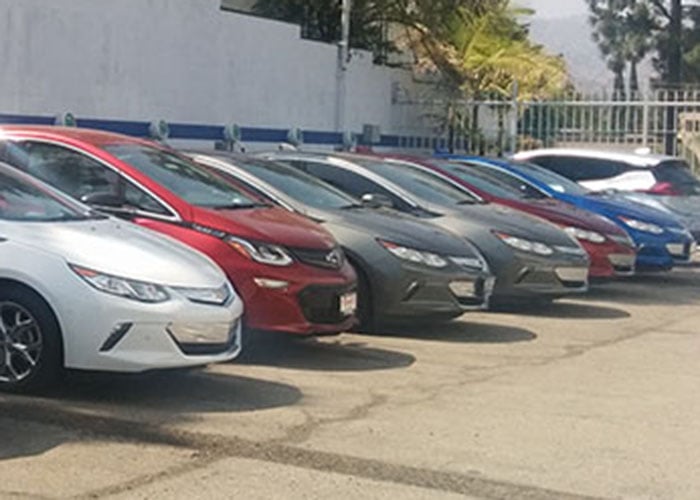
GM will tell you that the Volt's 40-miles of EPA-rated electric range is all that most people need for their daily driving, and they are right. They were basing that number on a Department of Transportation survey that found that 80% of Americans drive an average of less than 40 miles per day. However, I, like most people, am not most people, and the Volt required me to regularly burn gas. As a high-mileage driver, I often find myself driving well over 100 miles in a day, and I also regularly make 1,000-mile trips to and from Northern California.
I estimated that on a typical week, I was burning about six gallons of gas in my Volt. On the weeks I went to Northern California, that number jumped to nearly 30 gallons. I was way past gas anxiety, and it was enough to make me question why I bothered with a PHEV in the first place.
Choosing the Chevy Bolt EV
Leading up to the officially published EPA ranges in September of 2016, various electric vehicle forums were busy discussing what the Bolt EV's actual range would be. GM employees had already leaked that it would be well over 200 miles, but many on the Tesla forums had concluded a real-world range of 160 to 180 miles.
Even Volt owners were pessimistic. I had started a poll on the GM-Volt forum, where a majority of members believed the Bolt EV’s range would be about 200 miles. I was an outlier, predicting a range of about 225 miles, but some Volt owners had questioned the need to even include an option for 225 miles. I voted the way I did partly because I was optimistic but mostly because I knew that 220 miles was the minimum range I would need to make the leap to an all-electric car.
When the Bolt EV's official EPA range of 238 miles was announced, I was ready to ditch gas for good. By October, Chevy did a promotional release, delivering three brand new Bolt EVs to customers in Fremont, California. The Bolt EV was real (not vaporware), and deliveries to California would start before the end of the year.
As a high-volume plug-in Chevy dealership, I knew Rydell would receive priority in terms of initial deliveries, so I rushed to reserve the upcoming Bolt EV. Even though Rydell had only been accepting reservations for a day, by the time I got there, ten of their twelve initial Bolt EV deliveries were already spoken for.
The Bolt EV Had Enough Electric Range
I want to pause here to talk about how much range you should look for when considering an all-electric vehicle. I know a number of people in the EV community who suggest that we should get the smallest battery possible to cover our basic driving needs and look to the public charging infrastructure when that range falls short, but I wholeheartedly disagree.
Perhaps it's my personal emphasis on self-reliance, but I want to reduce my need for outside support as much as possible. If carrying 50% to 100% more batteries onboard significantly reduces my need to rely on the public charging infrastructure, that's worth the upfront cost. A friend who moved from a Hyundai Ioniq Electric (124 miles of EPA range) to a Hyundai Kona Electric (258 miles of EPA range) recently shared with me just how liberating it was to not have to rely on public charging during his regular drives.
That extra range also does more than just provide additional freedom in your daily routine. Many new electric vehicle owners are confused about how much range they actually need because they primarily drive around town or they bought their EVs during fair-weather months. Unlike gas cars, which see better fuel economy on the highway than in cities, electric vehicles actually see worse efficiency at freeway speeds. In fact, if compared to driving at slow in-town speeds, driving at fast freeway speeds can cut an EV’s range in half. Likewise, those living in regions with severe winters can expect to see a 40% drop in range compared to summer months.

My suggestion for anyone considering an electric vehicle is to limit your options to EVs with 40% to 50% more range than your regular daily driving needs (work commute, errands, family obligations, etc.). The range doesn’t, however, need to exceed longer drives that are done less frequently. I’ll address that later in this article.
Choosing the Bolt EV Over the Tesla Model S 60
Prior to reserving the Bolt EV, I was seriously considering the Tesla Model S 60. In late 2016, the Model S 60 actually had a 75 kWh battery that was software limited to 60 kWh (the same size as the Bolt EV’s battery). Also, the Model S 60 could “Supercharge” (Tesla’s private DC fast charging service) at its peak rate of just over 90 kW for almost the entire time from an empty to full battery. If GM hadn’t committed to delivering the Bolt EV to California by the end of 2016, I’d likely be driving a Model S 60 right now.

The biggest deterrent was, of course, price. The Model S was almost double the price of the soon-to-be-released Bolt EV, but there were reasons other than price to choose the Bolt EV over the Model S 60. Steve Wosniak, my more famous counterpart in this regard, made waves when he sidelined his Tesla Model S in favor of the Bolt EV, but after looking at his reasoning, I completely agree with him. Even then, I didn't like the idea of being stuck in the Tesla ecosystem (see my comments on self-reliance above), and the Model S had a bigger, more difficult to manage footprint in town than the smaller Bolt EV.
Don't get me wrong, I liked the Model S, and I suggested it to a number of people. If I had a Tesla referral code, I'd have my fair share of Tesla freebies at this point.
Waiting for the Bolt EV
Looking back, the wait for the Bolt EV wasn't nearly as long as it felt. I called my sales rep for updates at least a dozen times in November and December of 2016. I finally received the VIN in late November, and many of us who were waiting for our Bolt EVs spent the following weeks tracking inventory and delivery numbers.
When my Bolt EV was loaded on a train in early December, I thought it would only be a week or so for my car to make the trip from Michigan to California. That weekend, I rushed to Northern California in my 2015 Volt to swap it out with the older Ford C-MAX, which was getting cut from the family roster. The Volt wasn't significantly better on gasoline than the C-MAX (the 500-mile legs North or South required about 12 gallons of gas in either car), but the Volt was newer, with fewer miles, and with a much nicer interior. Plus, the Volt had the all-important LTE hotspot (a crucial feature for remote Northern California and one of the reasons I upgraded from my 2012 Volt).
Bolt EV Was a 1,000-Mile Capable
That 1,000-mile journey is a regular trip for me – one that I've made at least a hundred times in dozens of different vehicles. Suffice to say, any vehicle I own needs to be capable of making that trip in a reasonable amount of time, so that was the minimum bar for the Bolt EV.
I feel that a number of prospective EV owners are in similar situation as I was. They know that almost any EV can cover their local driving needs, but they are unsure about frequent (say monthly) trips they make that exceed the EV’s base range. That is a valid concern, and it’s based on a number of factors ranging from logistics (are there even chargers along the way?) to time constraints. In the following sections, I’ll explain how I explored these factors and came to the conclusion that the Bolt EV was, for me, capable of my regular 1,000-mile trips.
Researching Chargers on PlugShare
The first hurdle for the Bolt EV was to determine whether the public charging infrastructure at the time could even support my regular 1,000-mile trips, so I turned to PlugShare, which is a community driven tool that I recommend to every electric vehicle owner. PlugShare provides an interactive map with a database of EV charging sites that receives regular updates from the community as well as real-time data from many of the public charging providers.
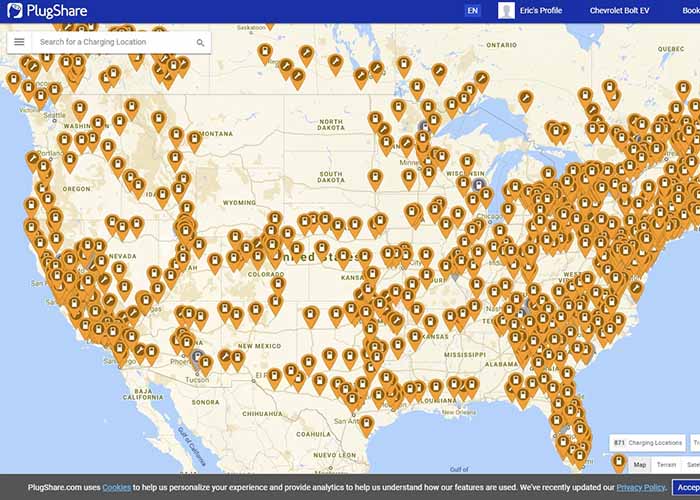
In this case, I was able to use PlugShare to determine the location, speed, and providers for the chargers I would need along my route. The first thing PlugShare told me was that I could no longer take Interstate 5 (the fastest, most direct route) in my Bolt EV. According to the map, there wasn’t a single public fast charger on I-5 for 350 miles between Los Angeles and Sacramento.
Despite that, I could still choose from dozens of DC fast charging sites connecting Northern and Southern California. Highway 99, a route that runs parallel to I-5 for most of the state, had plenty of charging options. EVgo, the public charging network originally funded under the NRG settlement, had built numerous chargers in communities along Highway 99.
Many Californians dismiss Highway 99 (a 65 to 70 MPH, multi-lane freeway), but that is only because they are specifically traveling between the Los Angeles and the San Francisco Bay Area. My trips take me farther north, so Highway 99 only adds 4 miles to my trip (versus nearly 30 miles if I were going to San Francisco).
I believe that covering the I-5 corridor with Superchargers is one of the key advantages Tesla still maintains in California, and it’s why Tesla vehicles are so popular for people who regularly drive between the Bay Area and Los Angeles. Even at this point, late in 2019 and nearly three years after I purchased my Bolt EV, I-5 is barely passable in any non-Tesla EV.
PlugShare also indicated that I had an alternative route I could take up Highway 101. This coastal highway also had sufficient coverage for a 200-mile electric vehicle like the Bolt EV. It is less popular for many people because it typically adds about an hour to the trip, but because I live in Ventura, the time difference is actually negligible. What is more, Highway 101 is always open during winter (which is not true for I-5 and Highway 99), and it had already been backup route for me, even when driving internal combustion cars.
Based on my PlugShare research, the public charging infrastructure was sufficient to support my 1,000 mile trips in my Bolt EV, and I even had a back-up route.
Predicting the Chevy Bolt EV’s Freeway Efficiency
At this point in time, no one really knew how fast the Bolt EV would charge or how efficient it would be at freeway speeds. In discussions, most people based their predictions for the Bolt EV on the Nissan LEAF or Tesla Model S, both of which were not very efficient vehicles. Some even based their efficiency predictions on the Tesla Model X, a midsize SUV! Based on those models, a Bolt EV owner could expect less than 3 mi/kWh efficiency on 70 MPH freeways, or a maximum range of less than 180 miles on a full battery.
I took a different approach that ended up being a far more accurate prediction. The Chevy Volt was, despite having an internal combustion engine, at its core an electric car. Having driven those 500-miles so many times, I knew what I could expect from the Volt in terms of efficiency. The trip would require the Volt’s full battery (about 10 kWh of energy) and about 12 gallons of gas. Gasoline has 33.7 kWh of energy per gallon, and most modern engines are about 30% efficient. Using my best estimation skills, I determined that the Volt required about 130 kWh to complete a 500-mile leg, which would be the equivalent of about 3.8 mi/kWh efficiency. The equation looked like:
(33.7 kWh * 12) * .3 + 10 kWh = 130 kWh
Because the Volt is so much more aerodynamic than the Bolt EV (a Cd of .287 in the Volt versus what people at the time thought was .32 in the Bolt EV – it later turned out that it was actually .308), I knew that the Bolt EV would be less efficient than the Volt, so I added 10% energy consumption. So my final, initial estimate for the Bolt EV was 143 kWh to complete my 500-mile trip, or 3.5 mi/kWh, which would result in a full-battery range of just over 200 miles.
For those who follow my video channel where I track many of my regular long trips, that prediction turned out to be eerily accurate.
Calculating the Bolt EV’s Effective Charging Speed
At the time I reserved my Bolt EV, very little was known about its recharging speed. Even today, it seems to be an area of contention. GM didn’t help the confusion with their Bolt EV teaser video showing the Bolt EV charging up on a 175 A charger, which would support up to 70 kW charging, at Milford Proving Ground.
That mystery was exacerbated by GM’s reference to “80 kW charging” in the Bolt EV Owner’s Manual (a statement that is still confusing people to this day). In retrospect, GM did the same thing that a number of other automakers do: List the rated speed of the charger instead of the actual charging speed of the car. For instance, Hyundai and Kia both list their current EVs as having “100 kW charging” when those EVs actually only charge at a maximum rate of about 75 kW. It’s a terrible way to describe charging speeds, and every automaker should abandon it.
Ultimately, though, the Bolt EV’s actual charging speed at the time of its release didn’t matter. The Bolt EV could charge faster than any of the public chargers could provide, which were rated at a maximum “50 kW” at that time. According to GM's materials, the Bolt EV could add 90 miles of range in 30 minutes of charging, which turned out to be fairly accurate for those 50 kW public chargers, which can actually only provide about 45 kW of power. What the estimate didn’t account for, though, was that a number of public chargers were even slower.
Another thing that estimate didn’t account for – something that I didn’t know then, but wished I would have known – was how efficiency affects those charging speeds. This is what I’ve come to refer to as an electric vehicle’s “effective charging speed.” Essentially, any car’s efficiency will vary based on conditions, and that variance will change how quickly the car actually recharges. An effective charging speed would let the owner know how many actual miles of range (under current conditions) were being added in a given period of time.
To Tesla’s credit, they get this half right by displaying their charging speed in terms of “miles of range added per hour;” however, they do so using EPA estimated efficiency, which might not give an accurate picture based on current efficiency. Also, it appears that Tesla displays the power being drawn from the charger rather than the amount of energy actually going into the battery, so they also have some work to do in regards to providing a more accurate, effective recharging rate for their customers.
By modifying the charging rate with to my estimated freeway efficiency for the Bolt EV of 3.5 mi/kWh, I can determine that 30 minutes on a 50 kW public charger will only add about 80 miles of effective range. The equation would look like this:
(45 kWh/2)*3.5 mi/kWh = 78.75 miles in 30 minutes
As a side note, now that faster public chargers are available (and the Bolt EV has been demonstrated to charge at a peak rate around 55 kW), we can update the calculation:
(55 kWh/2)*3.5 mi/kWh = 96.25 miles in 30 minutes
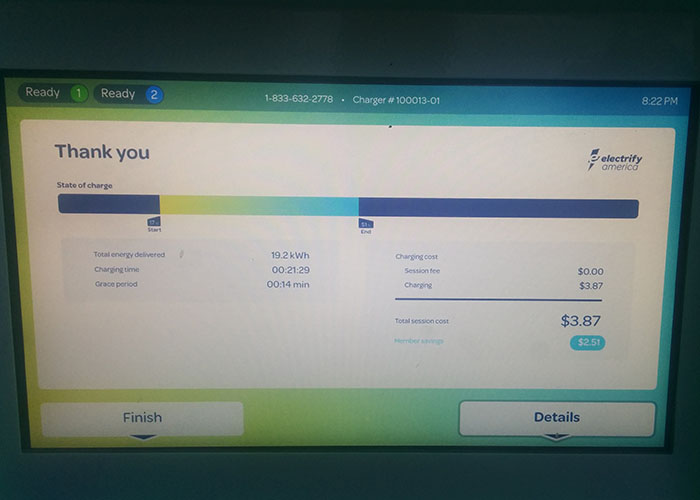
And as a contrast, the widely available 100 A DC fast chargers (these are often listed as “50 kW” chargers from providers such as EV Connect and EVgo’s Drive the ARC program) only provide about 35 kW of power, so the calculation for driving freeway speeds while using those 35 kW chargers would look like this:
(35 kWh/2)*3.5 mi/kWh = 61.25 miles in 30 minutes
For a homework assignment, I’ll let you calculate the Bolt EV’s effective charging rate on “24 kW” chargers that only provide about 22 kW of power, which should illustrate why a now infamous story didn’t accurately portray the Bolt EV’s capabilities. Unfortunately, that story possibly convinced thousands of people that electric vehicles weren’t ready to be considered as a primary vehicle.
Time Constraints
Now that I had the Bolt EV’s freeway range and charging speed determined, I could assess whether it met my expectations for completing my regular 1,000-mile trip. In my Volt (or any internal combustion car), each 500-mile leg of the trip typically took a minimum of 8.5 hours on I-5 before accounting for any delays due to accidents, congestion, or road construction. If I took Highway 101, that time jumped to 9.5 hours (even though the distance was nearly identical).
What I had estimated was that the Bolt EV would add about 1 hour to each 500-mile leg, which I found an acceptable trade off for no longer needed to burn gas. Here’s how I calculated it. Each 500-mile leg of the trip would require:
- 7.5 hours of driving (an average driving speed of 65 mph – the same as in my Volt)
- 2 hours of charging (three 35 to 40 minute charging stops)
- 9.5 hours of total time (about an hour more than it took in my Volt, including a meal break)
That estimated time was an acceptable tradeoff to me for the benefit of cutting my gasoline consumption by nearly 50 gallons a month.
In hindsight, those numbers ended up being a bit too optimistic. While I pegged the Bolt EV’s estimated efficiency and range, hadn’t calculated how it (in combination with slower, poorly-placed public chargers) would affect my overall trip speeds. The current reality is, my 500-mile trip times are closer to about 10 hours on average, though the good news is, with the proliferation of faster public chargers, my real-world trip times are starting to approach my initial estimate of 9.5 hours.
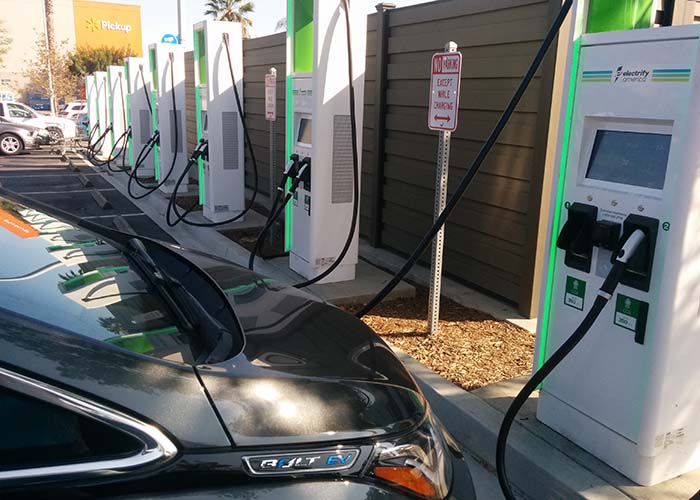 ChargePoint and EVgo Memberships
ChargePoint and EVgo Memberships
With the logistics of whether the Bolt EV was capable of making my 1,000-mile trips out of the way, I’m back to the story at hand. As I prepped the Ford C-MAX for sale and waited for news about my Bolt EV’s delivery date, I ensured that I had all my public charging memberships in order. By reviewing my most common driving on PlugShare, I was able to determine that I could do all of my driving with just two public charging memberships: ChargePoint and EVgo.
When I purchased my 2012 Chevy Volt, GM gave me a ChargePoint membership. The basic membership and card allows you to access any of ChargePoint’s free chargers; however, you must associate a credit card with the account in order to use their paid chargers. With the Volt, I rarely used any charging away from a 120 V wall socket or my work charging, so the ChargePoint account sat idle most of the time. With the Bolt EV, that usage would change dramatically.
My research also showed that, in 2016, my 1,000-mile trips would be impossible to do without access to EVgo chargers. EVgo’s membership and billing work differently than ChargePoint’s; I had to pay a monthly fee and lock in a per-minute charging rate. At the time, EVgo’s per-minute rate was only 10 cents, which equated to about 13 cents per kWh (the same as what most people pay for electricity at home). In the time since, EVgo’s rates have nearly doubled.
The ChargePoint and EVgo memberships both came with an RFID card, which I actually prefer over all other payment methods. They are simple, easy to use, and you can keep them in your car (the only place you’ll ever use them).
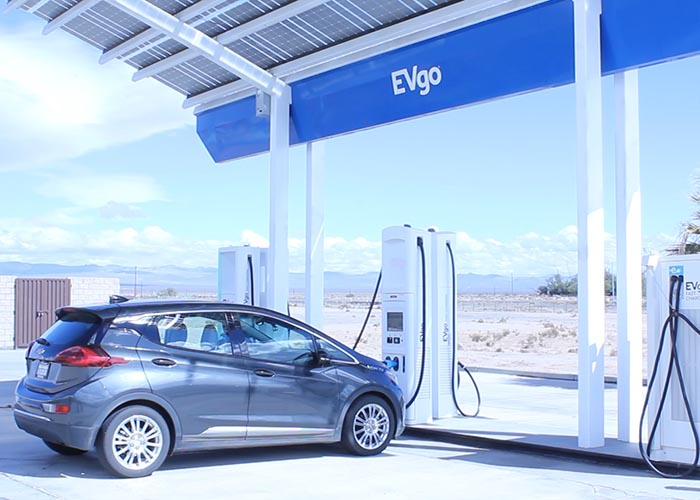
So my recommendation for new EV owners is that they do exactly what I did here. Assess your local and regional routes to determine the most prevalent networks, and then obtain memberships for those networks. Most now have free memberships that allow you to use the network, but you’ll pay more per session than you would if you were a paid member. Still, if you have an emergency, sorting out a charging membership is the last thing you want to do when you need to recharge.
If I were to do it again today, the only difference is that I would also set up an Electrify America account, which might actually be the most relevant for EV owners outside of California. Even though ChargePoint and EVgo are technically national networks, they don’t provide nearly the coverage outside of California that Electrify America does. In fact, in just over a year since Electrify America broke ground on their first charging site, a Bolt EV owner can drive across the country using several different freeway corridors while relying almost solely on Electrify America chargers.
Picking Up My New Bolt EV
The final delivery process turned out to be a bit of a GM snafu. It turned out that GM waited until two trains were fully loaded with Bolt EVs before they were sent out in late December of 2016. One train (apparently) was headed to Northern California, while my Bolt EV was on a second train heading to Southern California.
Based on the tracking data I had, my Bolt EV was actually in Southern California at the beginning of the last week of December. Call after call to my sales rep ended the same way, “We’re still waiting for delivery.” It turns out that, after unloading the cars, GM decided to do a final inspection and QC that lasted nearly the entire week.
On the 29th of December, I got a call that the delivery truck was on its way. I rushed over after work, just in time to see my Summit White Bolt EV rolling off the truck. Only, it wasn’t my Summit White Bolt EV. The car I reserved never showed up. Apparently, it hadn’t passed final inspection. To this day, I still don’t know what happened to the Bolt EV I originally reserved.
Distraught, I sat down and looked out the window at the Ford C-MAX I would be driving home that night, and was forced to contemplate my life decisions that had led me to that point. Luckily for me, though, one other person who had reserved a Bolt EV was unable to secure credit. My sales rep told me that, if his credit fell through, the Bolt EV would be mine. That Bolt EV was identical to the one I reserved in every way. The only catch? This one was Nightfall Grey Metallic, a color that I had grown to prefer over Summit White in the weeks since I initially reserved my Bolt EV.
I just needed to come back the next day, but in the meantime, my sales rep invited me to go sit in what would eventually be my Bolt EV. The interior looked every bit as good in real life as it did in the promotional materials. The cloth seats were a little stiff, but I knew from my previous experiences with GM products that they soften up after a short break-in period.
The next day, I came back with a large down payment and a spring in my step. The final price for my fully optioned Bolt EV LT was $38,500, but Rydell was offering a $1,500 rebate. The Bolt EV was also still eligible for the full $7,500 Federal Tax Credit, $2,500 California State Rebate, and $450 Southern California Edison Rebate at that time, so my final price (even after tax, license, and registration) was under $30,000.

Thanks to my research, preparation, and experience driving the Chevy Volt, I was able to hit the ground running in my brand new 2017 Bolt EV. Over the last three years and more than 100,000 miles of trouble-free driving, the Bolt EV has served me well. I hope this story helps you either better understand your current EV or determine which EV might be the right choice for you.
See you next time when I will discuss what GM needs to fix with the Bolt EV and Spark EV charging systems.
Eric Way focuses on reporting expert opinion on GM brand electric vehicles at Torque News. Eric is also an instructional designer and technical writer with more than 15 years of writing experience. He also hosts the News Coulomb video blog, which focuses on electric vehicles, charging infrastructure, and renewable energy. Eric is an active member of the EV Advocates of Ventura County, a volunteer organization focused on increasing the widespread adoption of electric vehicles. You can follow Eric on News Coulomb Youtube, on Facebook at @NewsCoulomb as well as on Twitter at @eway1978.

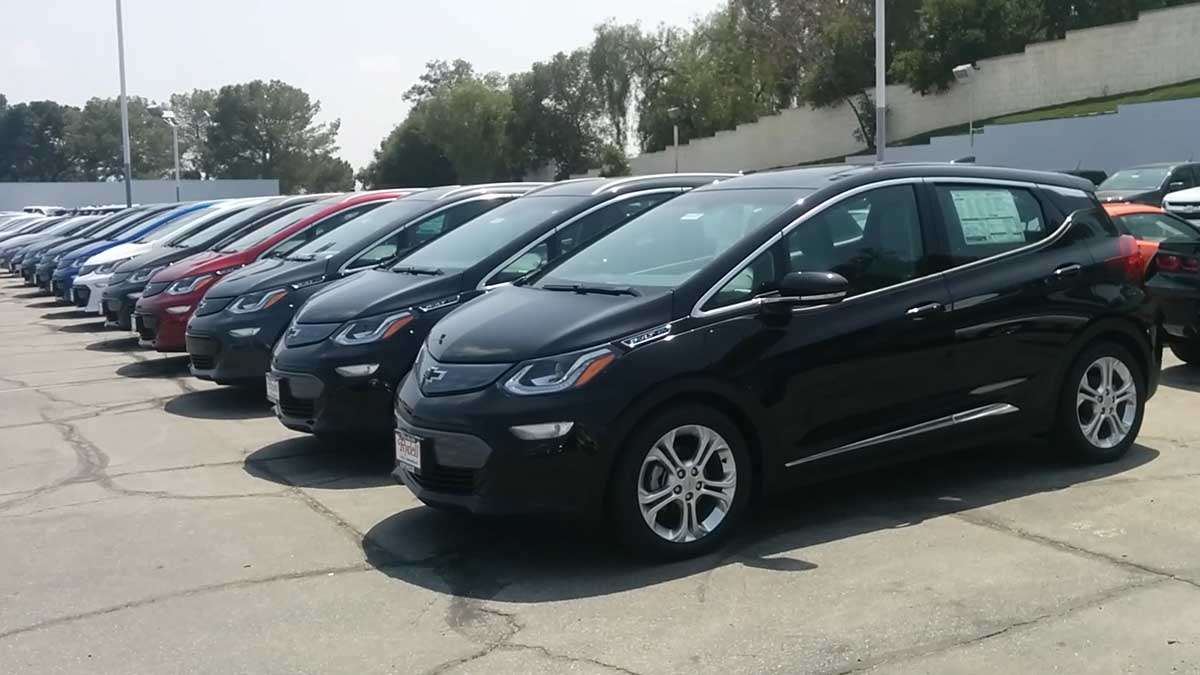




Comments
That was an interesting (and
Permalink
That was an interesting (and very thorough) EV article. It is also the first time that I have ever heard or read the term "Gas Anxiety" before. I can understand the idea, but I never worried that much about electricity before. This being opposed to range anxiety where the car and driver are actually stuck on the road somewhere waiting for a tow if they run out of electricity. It is something that I always felt good about in my Chevy Volts (and now Cadillac ELR) PHEVs is that if/when I run out of electricity the car just keeps driving on gasoline, and I can just refill it quickly and drive further. I figure that when I run my PHEV on electricity it is an EV, and when I don't then I am just like the rest of the 97% of American drivers using fossil fuels to get around. I like the fact that it runs as an EV because it does make me more aware of my energy use, and it's kind of a game to plan out the most efficient routes and driving habits, whereas pure gas drivers probably don't think about that unless they are hypermilers. When going longer distances where I know that I am going to use gasoline I regularly start my trip off using electricity in town and switch to gas on the highway, and then back to EV mode when I get back on city streets, so each mode is the most efficient. Similarly, in colder winters I will start of in EV mode and when I pop on the freeway I switch over to gas for 10 minutes to heat up the gas engine so that it heats the cabin more efficiently (the electric space heater is horribly inefficient), and then I switch back to EV mode after the car is warmed up inside. I'm sure that you understand that your 1000 mile trips make your needs unlike most drivers. But your experience does reveal much about the costs of running a BEV in those unusual conditions, and the associated efficiencies. I leased two Gen 1 Volts, and then bought another Gen 1 Volt after the leases expired. Then I bought the Cadillac ELR when California killed off the green and white HOV stickers (I have still never heard a decent argument to why they killed off the white stickers). I used to have a free Chargepoint charger at work, so even though I had nearly an 80 mile commute I was able to run purely off of electricity and pull off 170+MPG on my leased Volts. My recharge was around 12.4kWh and my range was 40-55 EV miles depending on temps. I was surprised that the generator/gas engine managed about 40MPG+, and I get similar results with the ELR despite it having lower EV ratings. One of my co-workers has a 2017 Volt and he replaced his previous Leaf that became unable to manage his 60 mile round trip commute, Interestingly he manages the 60+ miles fine in EV mode with the newer Volt. Still, the Bolt was an amazing EV achievement when it was released, which shows up by how competitive it still is against new EV rivals many years later. Similar to your experience with your Volt, I very rarely use public chargers, so it is interesting to see the cost and availability of fast chargers. It looks like Electrify America is really adding many fast chargers across the country in anticipation of VW releasing their long range/affordable BEVs here. But as we have read online they have adopted a pricing structure that overcharges rival Hyundai EVs for fast charging, even if it doesn't affect the Bolt fast charge costs. I think that I am like most EV owners who just charge at home overnight, except that I did install a 240V EVSE (charging station) which charges in less than half the time as it takes with 110V. Anyway, thanks for your real-world accounts and sharing the numbers surrounding your Bolt experience. May you have another 100,000 trouble free miles.
When you get an EV find one
Permalink
In reply to That was an interesting (and by DeanMcManis (not verified)
When you get an EV find one with twice the range of your daily commute. You need extra range for heat, AC, hills, stops, extra errands. For example my 9yo Leaf had a 75 miles range and my commute was 35 miles. After 86,000 miles my Leaf still goes 60 miles per charge. I can drive anywhere in Birmingham for free forever.
Newer EVs have better range. My wife's 2018 Nissan Leaf has an advertised range of 150 miles and we average 140 to 185 miles per charge with a high of 208 miles. We just completed a 4400 mile trip trough Texas and averaged 5.1 miles per kWh. After 3 years the Leaf easily exceeds the EPA range, a consequence of having a million mile battery formula.
Ig you don't have access to home or work charging check out many of the Plug in hybrid cars like the Prius Prime or Volt or RAV4 Prime.
When you get an EV find one
Permalink
In reply to That was an interesting (and by DeanMcManis (not verified)
When you get an EV find one with twice the range of your daily commute. You need extra range for heat, AC, hills, stops, extra errands. For example my 9yo Leaf had a 75 miles range and my commute was 35 miles. After 86,000 miles my Leaf still goes 60 miles per charge. I can drive anywhere in Birmingham for free forever.
Newer EVs have better range. My wife's 2018 Nissan Leaf has an advertised range of 150 miles and we average 140 to 185 miles per charge with a high of 208 miles. We just completed a 4400 mile trip trough Texas and averaged 5.1 miles per kWh. After 3 years the Leaf easily exceeds the EPA range, a consequence of having a million mile battery formula.
Ig you don't have access to home or work charging check out many of the Plug in hybrid cars like the Prius Prime or Volt or RAV4 Prime.